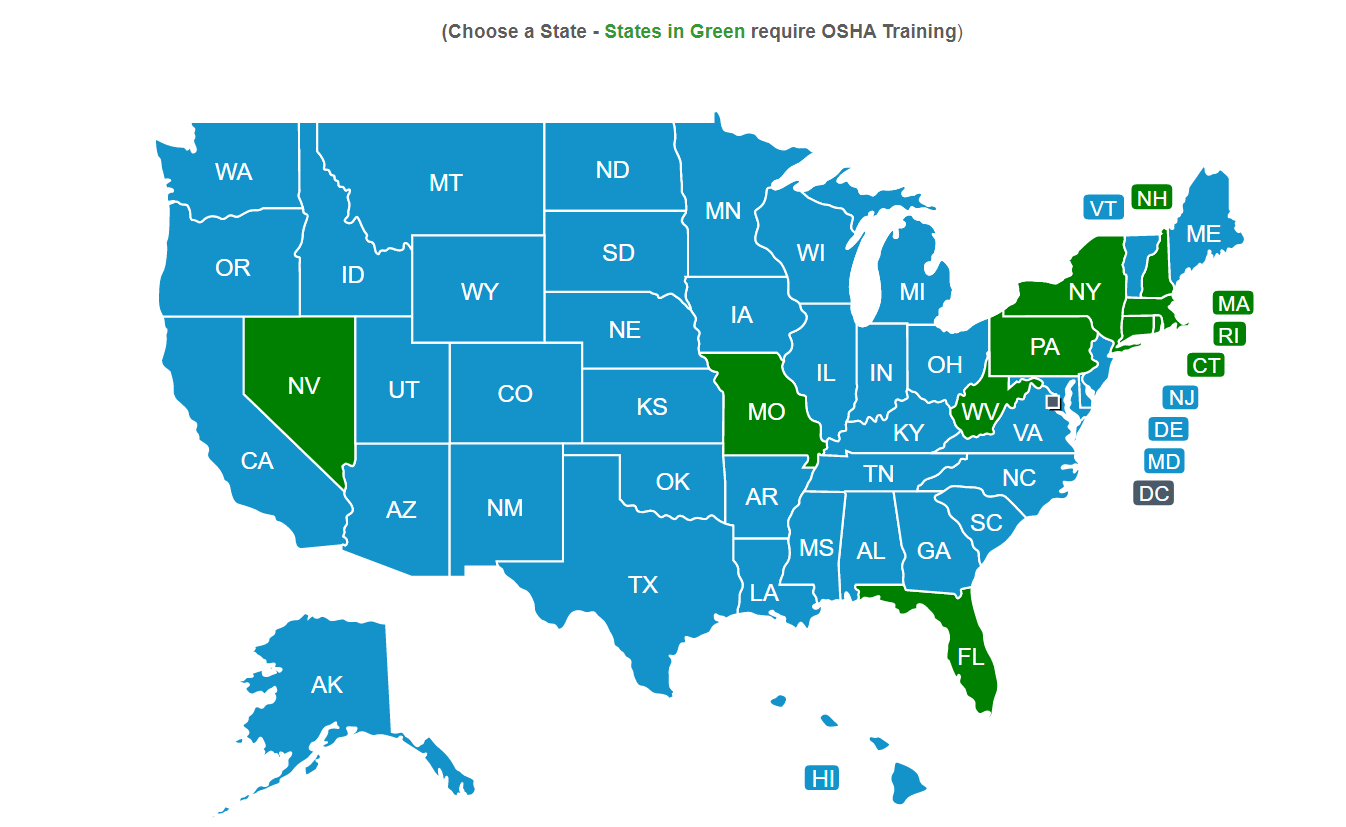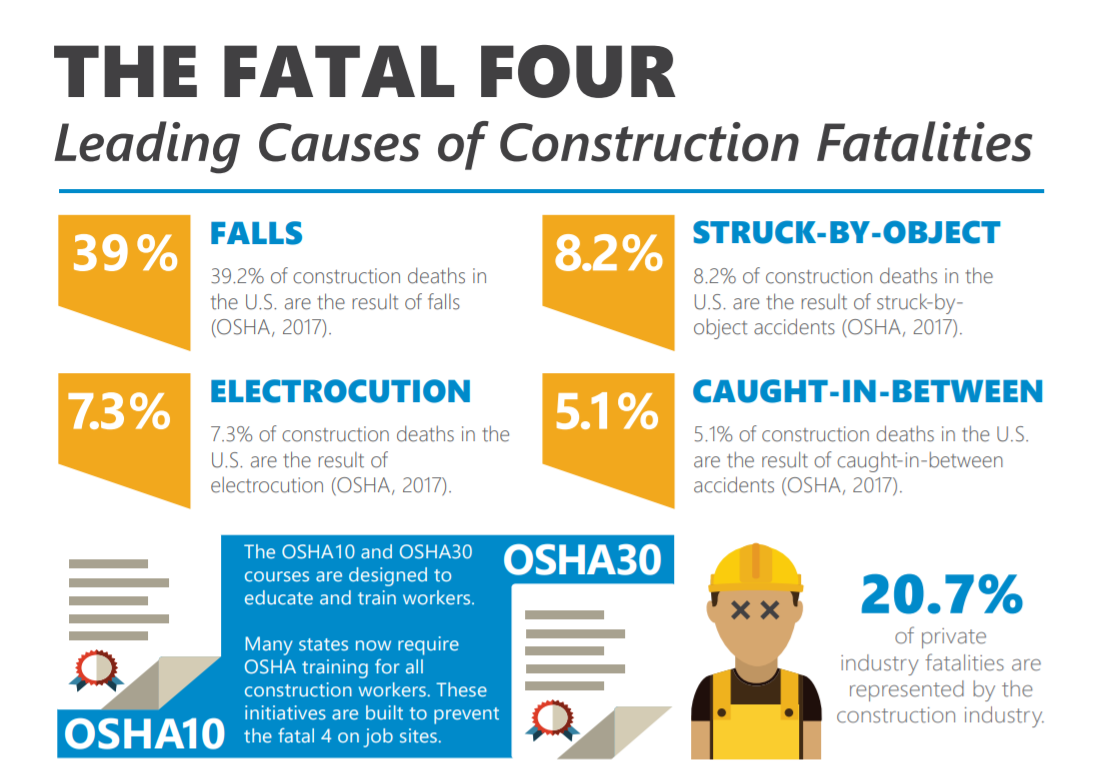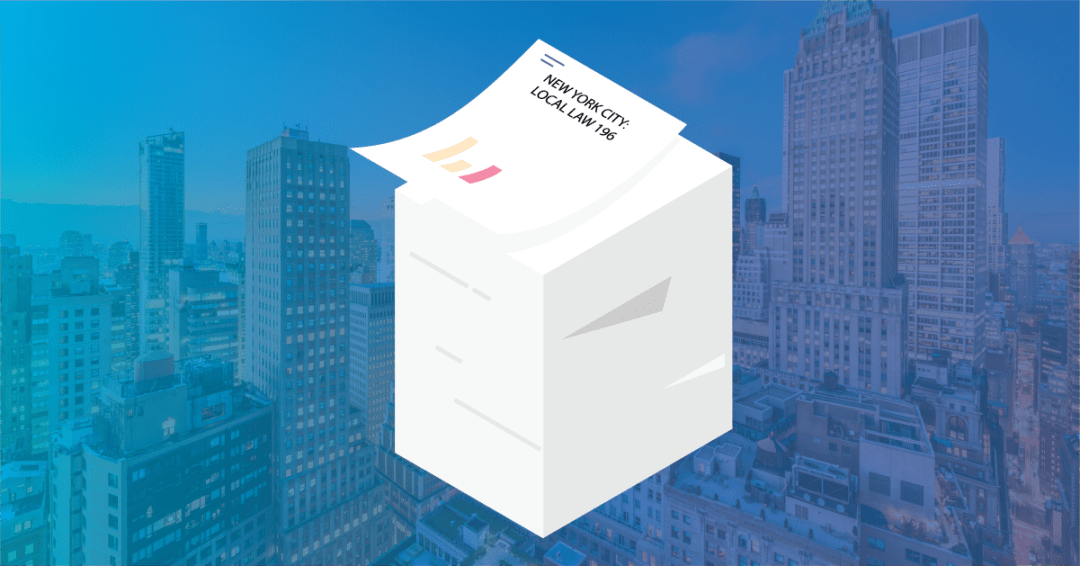Over the years, municipal, state, and federal governments have become increasingly involved with ensuring the health and safety of workers—not just in construction—but in all industries. Forty years ago (1971), The Occupational Safety and Health Administration (OSHA) was established. Since then, OSHA and its state partners, coupled with the efforts of employers, safety and health professionals, unions, and advocates, have had a dramatic impact on workplace safety.
The formation of OSHA was the first step in changing the future of workplace safety and has proven to influence safer work through notable decreases in fatalities and workplace injuries.
As we celebrate #ConstructionSafetyWeek 👷♀️🚧👷♂️ in 2021, we take another major step towards safer work as the United States largest ‘construction mega city’ enters uncharted territory launching Local Law 196 (LL196), holding the industry to a very high standard with respect to required safety training.
This article will explore why standardized safety training is important and why New York City’s Local Law 196 will be pivotal in influencing a future of safer construction sites.
Table of Contents
States Where OSHA Training is Required by Law
New York City is not the first place to standardize or require specific training to lawfully work on construction sites. In the U.S., there are a variety of states who have passed laws that mandate OSHA Outreach Construction Training.
States Requiring OSHA Outreach Construction Training:

- Connecticut: Required for all construction workers for public building projects paid for (in part or in full) by state funding where the total cost is over $100,000.
- Florida: Required for all construction employees on any Miami-Dade County public or private contract valued more than 1,000,000.
- Massachusetts: Required for construction workers at all public sector projects.
- Missouri: Required for all construction workers on public work projects (state or municipal).
- Nevada: Required for all construction employees (10-hour) and supervisors (30-hour).
- New Hampshire: Required for all construction workers on public works projects with a total cost over $100,000.
- New York: Required for all workers on public works contracts greater than $250,000. By, December 1, 2018, workers at job sites that require a Site Safety Plan (which includes sites that must designate a Construction Superintendent, Site Safety Coordinator or Site Safety Manager) must receive a minimum of 40 hours of training.
- Pennsylvania: Required for all employees (10-hour) and at least one supervisory employee (30-hour) of licensed contractors performing permitted construction or demolition work within the city of Philadelphia.
- Rhode Island: Required for all workers on municipal and state construction projects with a total cost of $100,000 or more.
- West Virginia: Required for workers on any public improvement project with a total cost more than $500,000.
Some states do not have any standard for OSHA training, or construction safety training of any kind. In those states, employers may have site requirements or standards that they set, but it is not governed by the state or enforced in any way.
Why Standardized Safety Training is Important
Safety training is a low-cost investment that rewards the industry with safer practice, less accidents, and ultimately saves more lives on construction sites.
Think of what the roadways would look like if we did not ensure that every driver on the road has a valid driver’s license. Allowing anyone behind the wheel would be chaotic, unsafe, and lead to many more accidents on the road.
If you look at safety training in construction in the same way, you will recognize that standardization is a very good thing. Construction is a very dangerous industry, and any advantage that can be given to construction workers in protecting their safety should be prioritized.
OSHA’s Fatal Four:
The Occupational Safety and Health Administration has clearly outlined the four most fatal accidents that occur on construction sites as: Falls, Struck-by-Object, Electrocution, and Caught-in-Between Accidents.

Not only does OSHA Outreach Construction Training take aim at reducing the number of accidents that fall under the “Fatal-Four” categories, but the industry has developed very specialized training to educate workers on avoiding these types of incidents on site. For example, a worker can take an 8-Hour course specialized in fall arrest/fall protection in addition to an OSHA Outreach course which may also cover fall related curriculum.
The chance of a construction worker dying over a 45-year career is 1 in 200. Educating and training workers key to protecting workers from contributing to this eye-opening statistic.
A trained workforce is the best investment that the industry can make in terms of protecting workers.
A Brief Overview of Local Law 196 in New York City
How is New York City’s commitment to standardized safety training different from other states that mandate OSHA Outreach Training? We will show you.
In 2017, Local Law 196 was signed by Mayor Bill de Blasio, which outlined New York City’s forward-thinking commitment to safer job sites. Local Law 196 promotes safer job sites and enhanced safety training in the construction industry by holding the industry to a high-standard in terms of safety training requirements.
The New York City Department of Buildings (NYC DOB) reported 10 fall related fatalities in 2017, which was an all-time high in the city of New York. In response to these fatal accidents, the city looked to promote a plan to protect construction workers known as Local Law 196 of 2017.
The NYC DOB’s commitment to safety includes thorough plan to ensure all worker certifications and training can be verified on job sites and accessed on demand by NYC DOB enforcement personnel. Accessibility to this information allows the City of New York to proactively verify safe-practice and discipline construction permit holders who are unwilling to abide by the motions set forward with Local Law 196.
Today, in 2021, we enter the latter stages of the rollout of Local Law 196. Although the law was signed in 2017, the ambitious plans by the city took years of strategic rollout to ensure the industry is well prepared for the changes.
The three major requirements of Local Law 196 are:
- Workers must obtain a Site Safety Training Card (SST Card), which includes at least 40 hours of the required safety training as outlined by NYC DOB
- Supervisors must obtain a Supervisor SST Card, which includes at least 62 hours of the required safety training as outlined by NYC DOB
- Permit holders of a site MUST keep accurate daily attendance logs of workers on-site and verify the presence of completed safety training via a Site Safety Training Card (SST Card)
New York City is not only requiring higher standards in terms of the number of training hours that worker’s need to complete, but they are mandating that enforcement take place daily on all jobsites. Organizations who hold the permit on a project, usually the General Contractor (GC), are held responsible to verify the presence of required SST Cards for ALL workers who step foot on their sites.
Local Law 196: What is an SST Card?
A Site Safety Training Card, or SST Card, is a card carried by construction workers in New York City to validate the presence of required safety training. Like a driver’s license being used to legally drive a car on the road, the SST Card is the standard credential for NYC workers to legally perform work on a jobsite.
The card stores and displays all a worker’s up-to-date safety training, which allows both on-site staff and DOB officials to verify if a worker can be on-site.
Why Local Law 196 Will Change the Future of Construction
Local Law 196’s success will be measured by every major construction market, not just in the United States, but across the globe. With the implementation of the law, a higher standard of safety training is being set by the City of New York. A successful implementation of Local Law 196 will inevitably set the bar for safety training standards in EVERY construction market around the world.
Key Metrics to Watch in New York City:
- Fatality Numbers
- Cause of Fatalities
- Union vs. Non-Union Safety
- Demographics in Relation to Fatalities
- # of Fines
- Total $ Generated from Fines
- Frequency of Inspections & Audits
The U.S. Bureau of Labor Statistics typically tracks all, or most, or these metrics. You can locate the City of New York’s 2019 safety metrics and safety performance here. Additionally, New York City Occupational Safety and Health (NYCOSH) publishes an annual report , where most of the metrics are heavily influenced by safety performance in New York City.
Ultimately, Local Law 196 was signed in response to a staggering amount of construction fatalities in the City of New York. Much of the success measurement around the implementation of the SST Card Program and the law itself will surround construction fatalities.
Will the implementation of Local Law 196 reduce the likelihood of fatal workplace accidents in the construction industry?
Do higher standards of safety training hours have a direct impact on fatality metrics of the construction industry at large?
Only time will tell whether the model launched in New York City as part of Local Law 196 will be replicated in other large construction centers. But, as we celebrate #ConstructionSafetyWeek, we tip our caps to safety leaders like the New York City construction market.
Happy Construction Safety Week!
We salute all who are working to make construction safer, and we look forward to strengthening a culture of safety in this fast-paced industry. Happy #ConstructionSafetyWeek 👷♀️🚧👷♂️
Book a demo with our team and explore how myComply works with over 5,000 contractors to reduce EMR, decrease insurance costs, and ensure a 100% qualified workforce.



